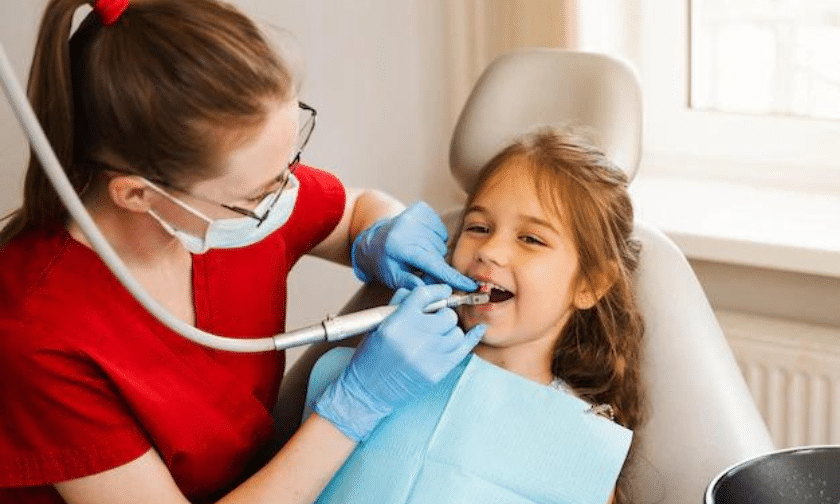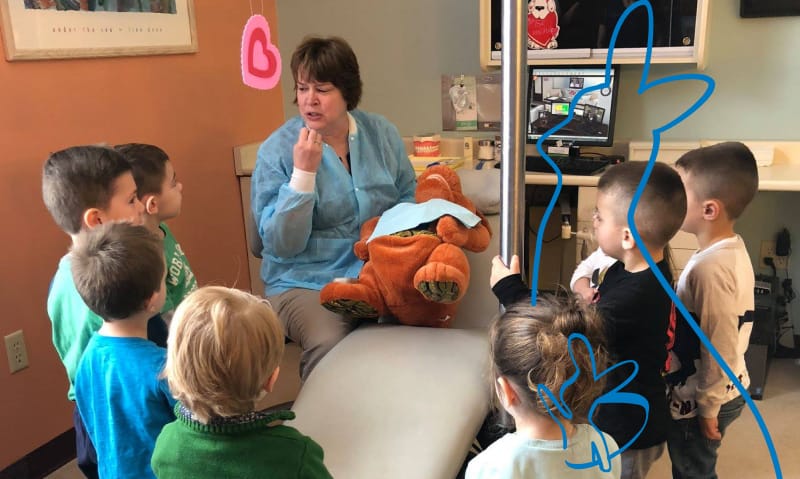Relied On Kids Dentist for a Favorable Dental Experience
Relied On Kids Dentist for a Favorable Dental Experience
Blog Article
A Comprehensive Guide to the Different Treatment Options Available in Pediatric Dentistry for Children
In pediatric dentistry, recognizing the varied therapy options readily available is essential for guaranteeing ideal oral health and wellness in youngsters. From preventative treatment methods that develop a structure for long-lasting oral health to corrective therapies that address instant issues, the variety of services is thorough. In addition, orthodontic remedies and specialized approaches for kids with distinct needs better boost the scope of practice. As we discover these numerous alternatives, it comes to be clear that tailored treatment is not just helpful yet necessary for fostering a positive dental experience. What specific considerations should guide these treatment choices for young people?
Preventive Care Options
Preventative care choices in pediatric dental care are crucial for maintaining children's dental wellness and stopping future dental issues. These strategies concentrate on enlightening both kids and parents concerning appropriate dental health practices, dietary selections, and regular oral check outs.
Among the primary elements of preventative treatment is routine dental check-ups, typically recommended every 6 months. Throughout these brows through, dental specialists can identify possible issues early, give cleanings, and use fluoride therapies to enhance enamel and decrease the risk of dental caries. In addition, dental sealers might be applied to the chewing surfaces of molars, serving as a safety obstacle against decay.
Education on correct cleaning and flossing strategies is also important. Moms and dads are urged to monitor their youngsters's oral health regimens until they create the dexterity to do so independently. Furthermore, dietary counseling can assist family members comprehend the effect of sugary treats and beverages on dental health, promoting healthier options.
Corrective Treatments
Resolving oral issues that occur regardless of precautionary steps, corrective treatments in pediatric dental care play an important function in restoring a kid's dental health and wellness. These treatments are designed to repair and refurbish teeth impacted by decay, injury, or developmental anomalies.

Common corrective options consist of oral fillings, crowns, and pulpotomies. Oral fillings are used to treat dental caries by getting rid of corroded cells and filling the area with products such as composite resin or oral amalgam. For extra extensive degeneration or architectural damage, crowns may be suggested to offer toughness and security. Pediatric crowns are usually crafted from stainless steel or tooth-colored materials to make certain durability and visual appeals.
In cases where the oral pulp is impacted, a pulpotomy may be needed to reduce discomfort and avoid further infection. This procedure entails the removal of the infected pulp and sealing the tooth to preserve its feature.
Orthodontic Solutions
Orthodontic solutions are vital in fixing and aligning teeth bite issues in youngsters, ensuring optimum oral wellness and feature. Pediatric orthodontics focuses on the distinct dental growth of children and adolescents, dealing with worries such as imbalance, congestion, and jaw discrepancies.
Very early evaluation, typically suggested by age 7, enables timely treatment, which can prevent more complicated issues in the future. Usual orthodontic home appliances include braces, retainers, and area maintainers. Traditional steel dental braces are frequently utilized for their performance in fixing various oral problems, while clear aligners use a more aesthetic alternative for older youngsters and teenagers.
In particular instances, interceptive orthodontics may be employed, where certain therapies are initiated to direct the development of the jaw and teeth. This positive approach can reduce the need for considerable orthodontic work later on. Additionally, useful appliances might be made use of to boost jaw partnerships and improve facial proportion.
Sedation Dentistry
Making use of sedation dentistry can dramatically reduce anxiousness and pain in pediatric patients during dental procedures (kids dentist). This technique is particularly valuable for youngsters who are concerned regarding dental check outs or require comprehensive therapy that might be uncomfortable. Sedation strategies vary, varying from mild sedation with laughing gas (laughing gas) to deeper sedation methods administered intravenously
Laughing gas is a typical option, as it is risk-free, efficient, and permits fast recovery. It generates a calming effect, enabling youngsters to continue to be loosened up throughout the treatment while still being able to communicate with the dental group. For you can try these out more complex treatments, oral sedation or basic anesthesia might be thought about, specifically for youngsters with unique demands or those that might not work together throughout therapy.

Special Requirements Dentistry
For many youngsters with special needs, dental check outs can be specifically challenging as a result of sensory level of sensitivities, communication barriers, or clinical problems that call for tailored strategies. Special needs dentistry is a specific area that concentrates on supplying extensive oral take care of youngsters with various physical, developmental, or emotional difficulties.
Experts around are trained to understand the unique demands of these clients, employing strategies to reduce stress and anxiety and pain. This may include using visual help, social stories, and hands-on demonstrations to assist kids comprehend the dental treatments. Furthermore, the environment is commonly adjusted to accommodate sensory sensitivities, developing a more welcoming and much less intimidating area.

Eventually, the goal of unique needs dentistry is to foster positive oral experiences, promote dental health, and develop a structure for lifelong care, making it possible for youngsters with special demands to achieve optimum dental wellness.
Verdict
In summary, pediatric dentistry includes a broad array of treatment choices essential for where does the word dentist come from advertising and maintaining youngsters's dental wellness. Preventive care develops a structure for lifelong oral hygiene, while restorative therapies deal with existing oral problems. Orthodontic remedies help with proper jaw growth, and sedation dentistry enhances comfort throughout procedures. Additionally, specialized care for children with unique needs ensures positive experiences and urges ongoing oral health and wellness. Jointly, these strategies play an essential role in supporting the oral health of all kids.
Oral dental fillings are utilized to treat tooth cavities by removing decayed tissue and loading the room with materials such as composite material or dental amalgam. Traditional metal braces are often made use of for their performance in remedying various dental problems, while clear aligners offer an even more aesthetic choice for older teenagers and children.
It causes a soothing result, enabling kids to continue to be kicked back throughout the procedure while still being able to interact with the oral team. Preventive care develops a structure for lifelong oral hygiene, while corrective treatments address existing dental problems. Collectively, these techniques play a crucial function in supporting the oral health of all youngsters.
Report this page